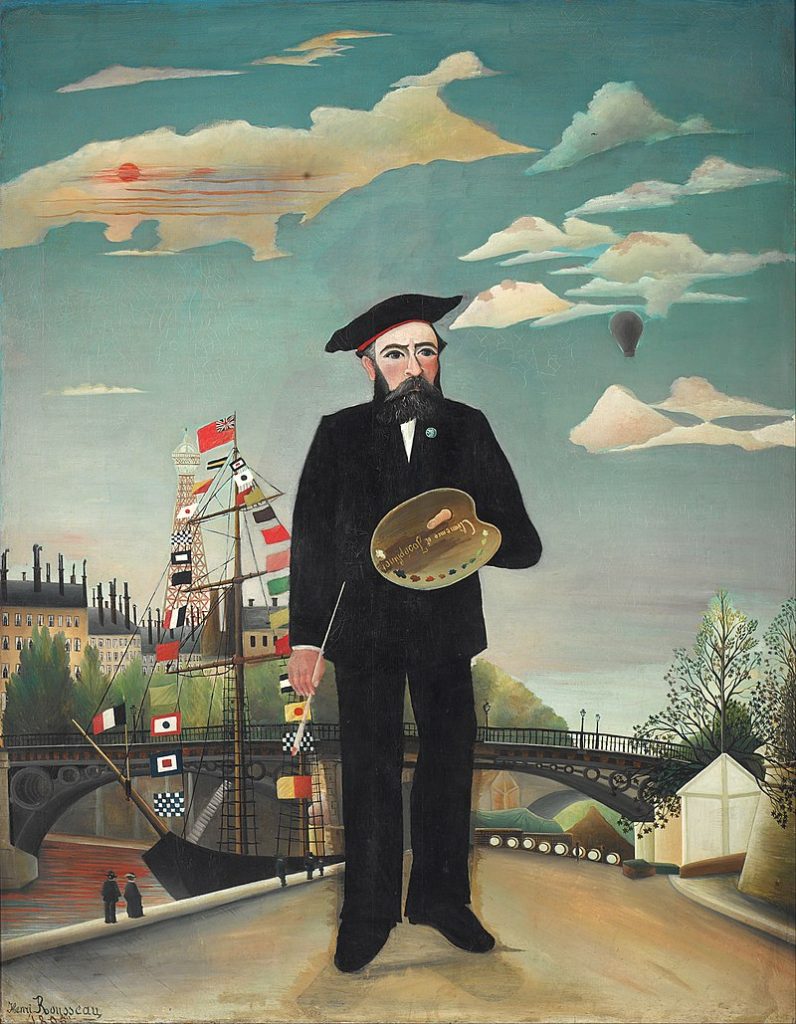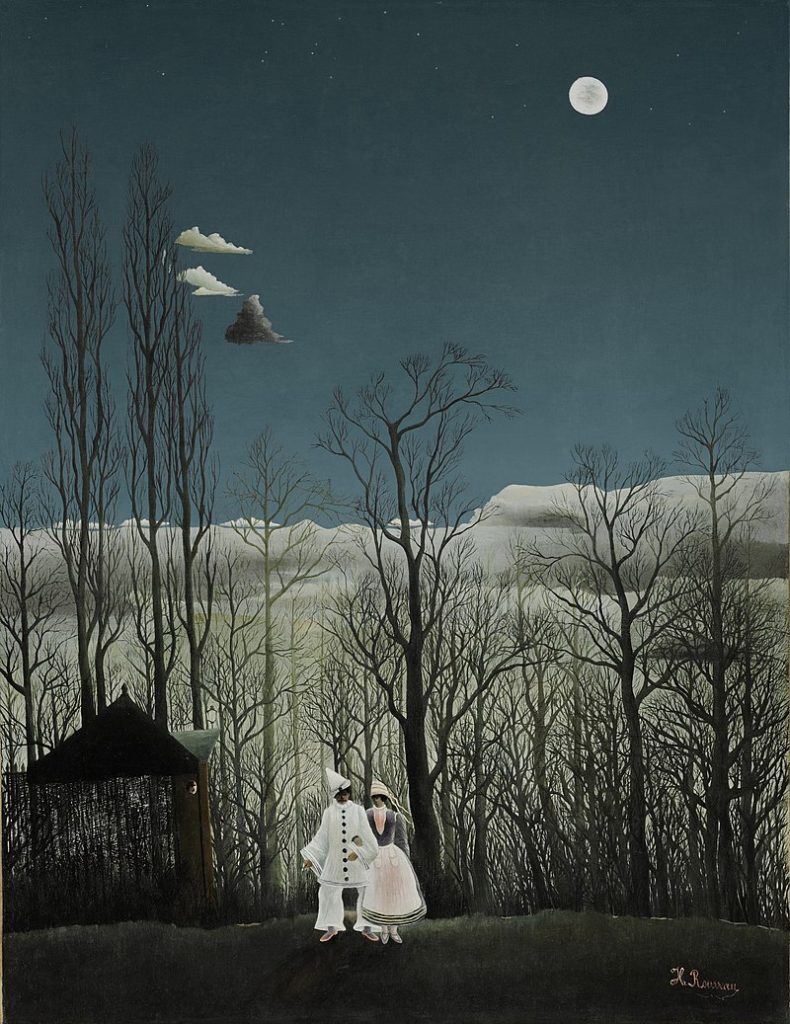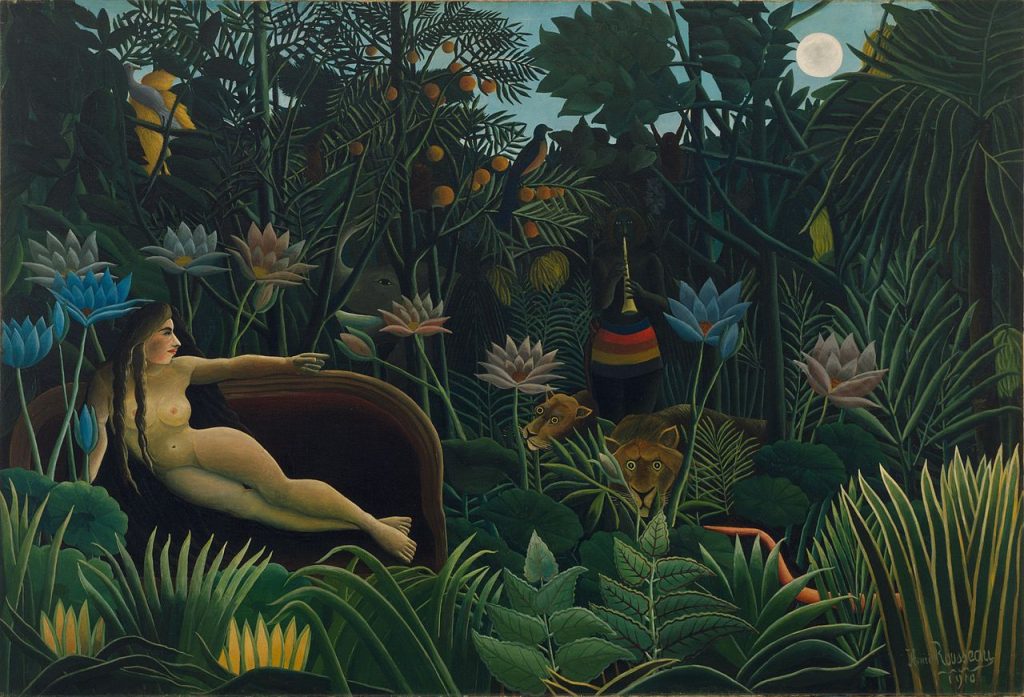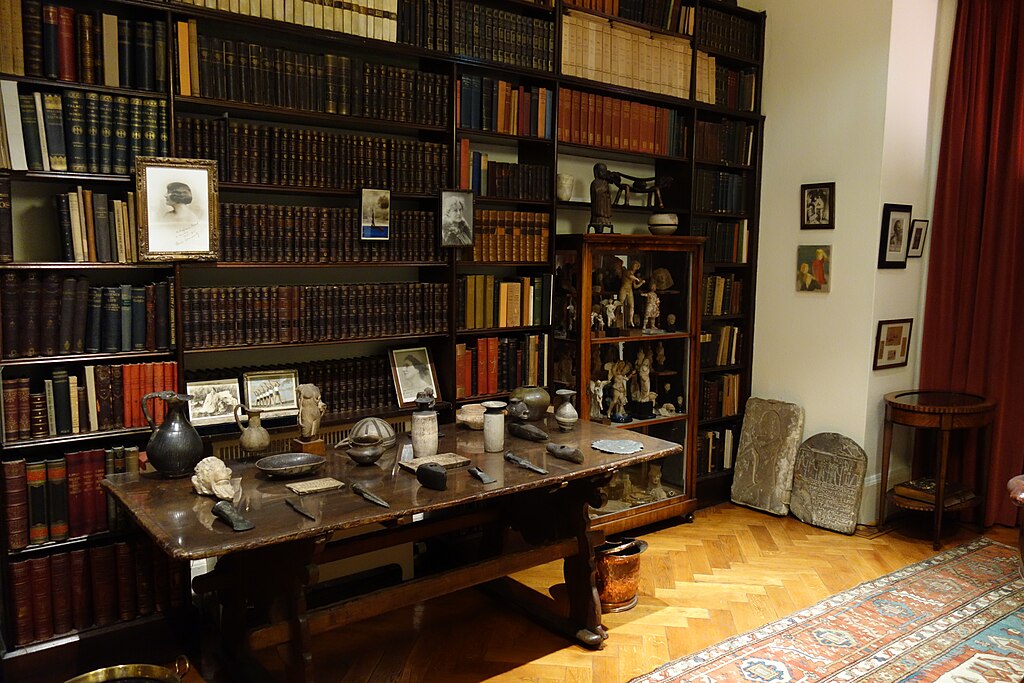Leisure • Art/Architecture
Henri Rousseau
The artist Henri Rousseau — who had no formal training, and who only began painting seriously in his forties — was ridiculed by the critics of his day. Yet he is now celebrated as a visionary genius; one who heralded the modern age of art.
He is an example to aspiring and struggling artists everywhere.

Rousseau was born in Laval in the north west of France in 1844. His father was a plumber (as was his father before him). The young Henri did poorly at school and spent a month in jail for embezzling money from his first job in a law firm. After a brief and undistinguished career in the French army, he moved to Paris to become a ‘douanier’: a tax collector — the ultimate symbol of mundane bureaucracy and petit-bourgeois conformity.
But Rousseau was anything but conformist. He possessed a singularly vivid, even fevered imagination — though it took him many years before he found a suitable outlet. He was thirty five before he produced his first painting…and well into his forties before he began doing so with any seriousness.

It was hardly a promising start. In 19th century Paris, where art was close to a religion, artists were expected to spend years studying at academies before they could merit the title. But aside from taking advice from one or two established painters, Rousseau had no training whatsoever.
This is clear enough from his paintings, which commit all manner of technical sins. He was a painter for whom the exclamation “my child could have painted that!” might to have been coined.

Though he painted a wide variety of subjects, Rousseau’s favourite was the jungle: tropical plants, weather, birds and beasts. He was inspired, he sometimes claimed, by a stint in Mexico with the French army in the 1860s. This was a fiction: Rousseau had never seen the jungle — nor had he ever left France. Instead, his work was inspired by storybook illustrations, visits to Paris’s botanical gardens, and his own, wild imagination.
For whatever Rousseau’s paintings lacked in terms of accuracy and technique, they made up for in sheer originality. His work is characterised by bold colours, dramatic compositions and a heady, dreamlike atmosphere.

Rousseau had his first break in 1886, exhibiting four paintings at the Salon des Indépendants, the home of the French avant-garde. But the critics were scathing: “Rousseau paints with his feet, with a blindfold over his eyes”, commented one.
Undaunted, Rousseau submitted again the following year, and the year after that — and would carry on doing so every year until his death. He became something a running joke, with critics competing to see who could come up with the wittiest put-down. Rousseau enjoyed collecting them in a scrapbook.
Gradually however, he established a minor cult following among his fellow artists in the avant-garde. Paul Gauguin raved about his work; Felix Vallotton called him “the alpha and omega of painting.”

But Rousseau would have likely died an obscure and curious footnote in the history of French art if it weren’t for another artist — a young Pablo Picasso. In 1907, Picasso came across one of Rousseau’s paintings being sold for scrap on a Paris street. He was immediately struck by its genius. In Rousseau, he recognised a kindred spirit; Picasso was in the process of abandoning the technical mastery of his formative years for a much looser, figurative style.
The following year, he threw a banquet for ‘Le Douanier’ Rousseau, inviting luminaries from the art world to dine in his honour. The celebrations were partly tongue-in-cheek; a chance to poke fun at one of art’s longest running jokes. Instead, the party went down in history as perhaps the wildest ever thrown in Paris. One of the guests swallowed a hat; another turned up riding a donkey. Perversely, its legend helped to legitimise Rousseau as a serious artist.

Rousseau died only two years later. But the qualities that were once mocked in his work were now celebrated. He was seen as a visionary; the godfather of modern art. What lessons should artists take from his story?
Firstly, Rousseau possessed an unshakeable self-belief. It didn’t matter that the critics thought him a joke: he knew he was a genius — and in the end, this was all that mattered. More importantly, he knew the role of art is not to mirror reality. It is to give us a window onto the mind of the artist, however curious or ‘primitive’ it may be.

There are many technically accomplished painters whose work is bloodless and dull: far fewer who, in spite of their deficiencies, are blessed with the gift of true originality.
Rousseau’s life and work both teach us a powerful lesson. We are never too old, too inexperienced or too immature to produce something of lasting value. What matters is how freely we allow the wild, untamed parts of our psyche to roam.



















